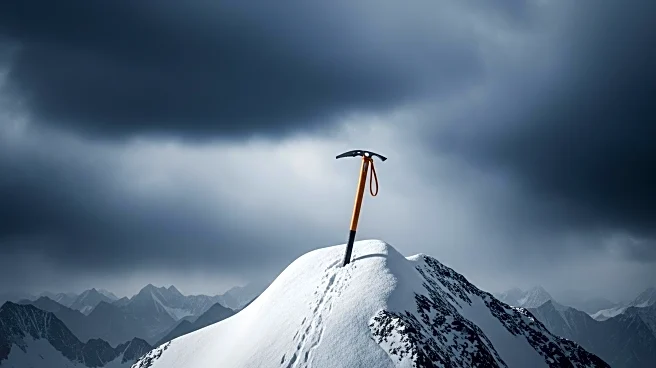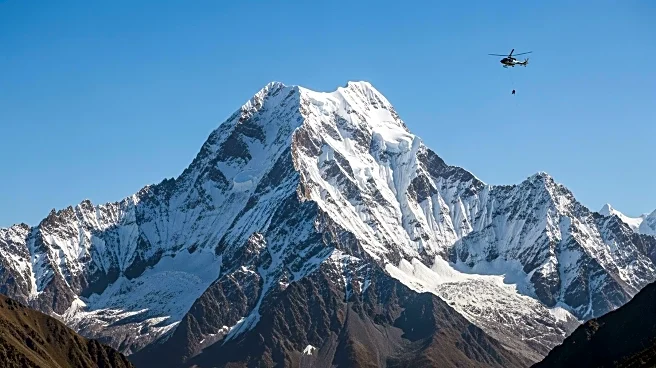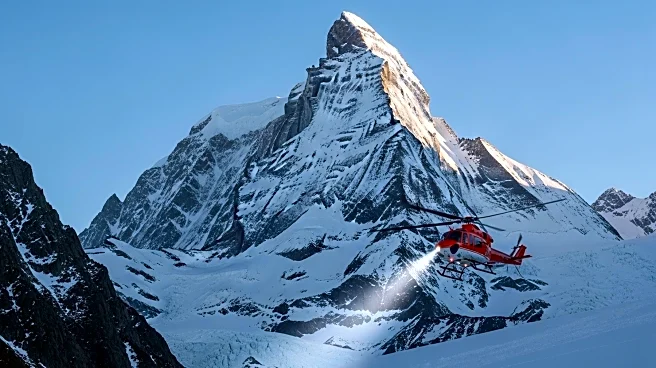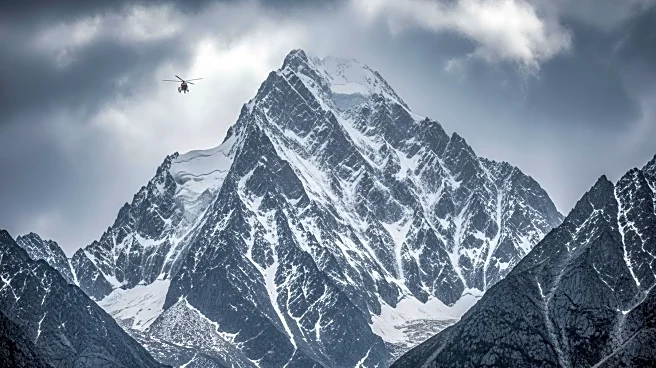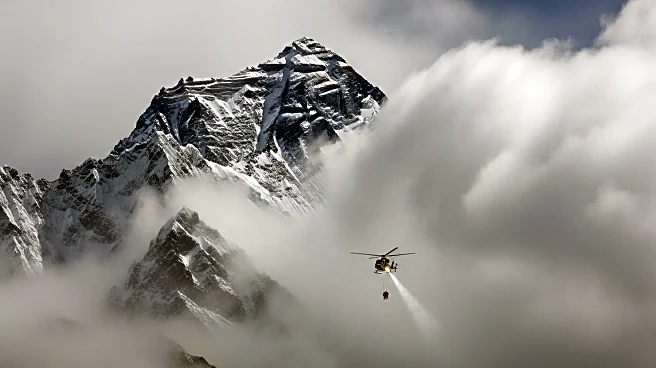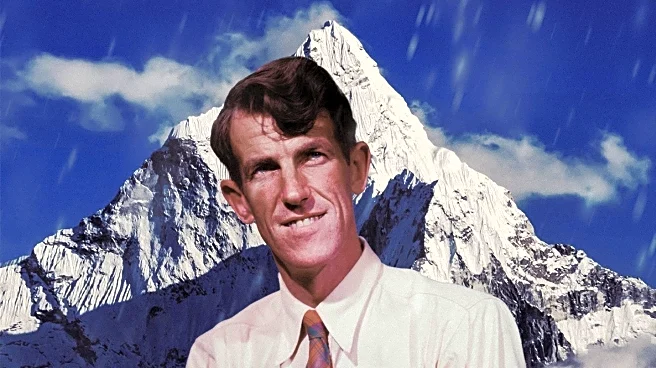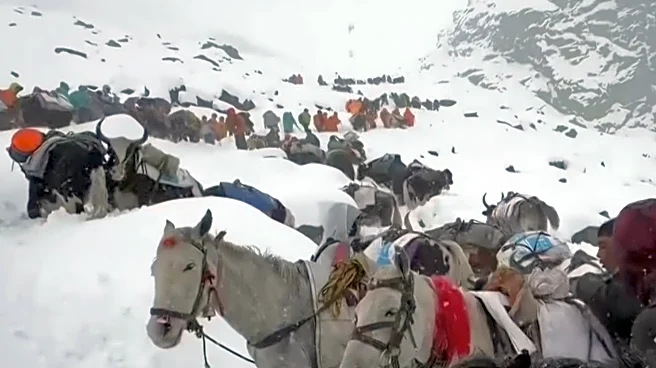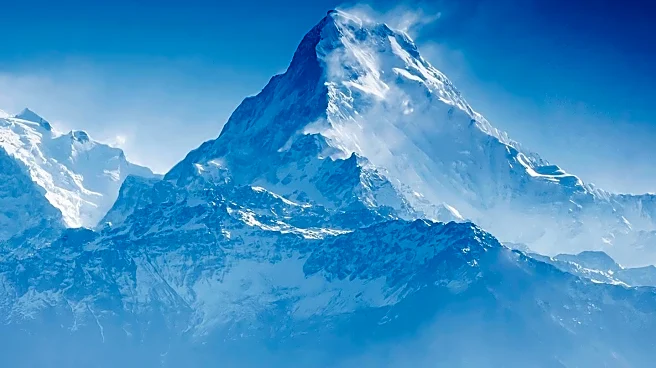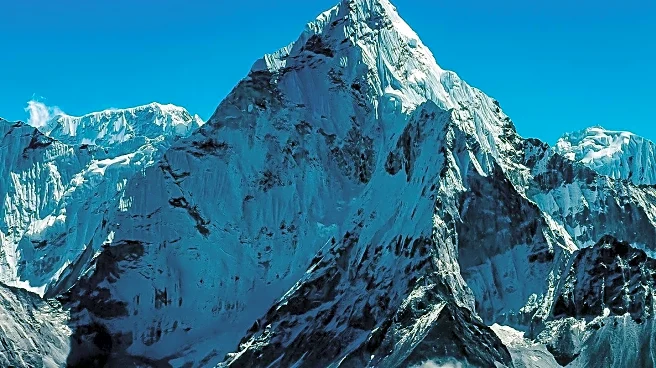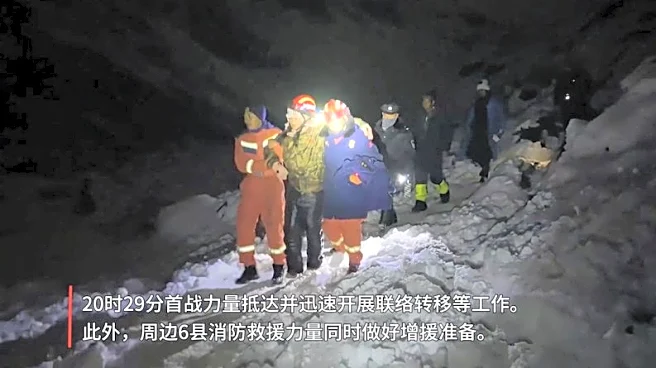What's Happening?
A severe blizzard has trapped nearly 1,000 climbers on Mount Everest, resulting in the death of a South Korean hiker. The climber was caught in a snowstorm while ascending Mera Peak, a mountain just south of Everest, and was reported missing over the weekend. His death was confirmed by the Nepal Mountaineering Association. The blizzard, which began on Friday evening, intensified over the weekend, leaving climbers stranded on the eastern slope of the range. Rescue operations are ongoing, with 580 hikers already guided to safety in Tibet. The extreme weather has caught many experienced climbers off guard, with reports of hypothermia among those trapped. The blizzard coincided with China's Golden Week holiday, a peak period for tourism.
Why It's Important?
The incident highlights the unpredictable and dangerous conditions that can occur in high-altitude climbing, even for experienced hikers. The blizzard's timing during a major holiday underscores the potential risks associated with increased tourist activity in mountainous regions. The situation has prompted a large-scale rescue operation, showcasing the challenges faced by emergency services in such remote and harsh environments. The tragedy also raises questions about the preparedness and safety measures in place for climbers during peak seasons. The economic impact on local tourism and the potential for stricter regulations on climbing activities could be significant.
What's Next?
Rescue operations are expected to continue as authorities work to ensure the safety of all remaining climbers. The incident may lead to a review of safety protocols and emergency response strategies for high-altitude expeditions. There could be increased scrutiny on the management of tourist activities in the region, particularly during peak seasons. The climbing community and local authorities may also engage in discussions about improving weather forecasting and communication systems to better prepare for such extreme events in the future.

